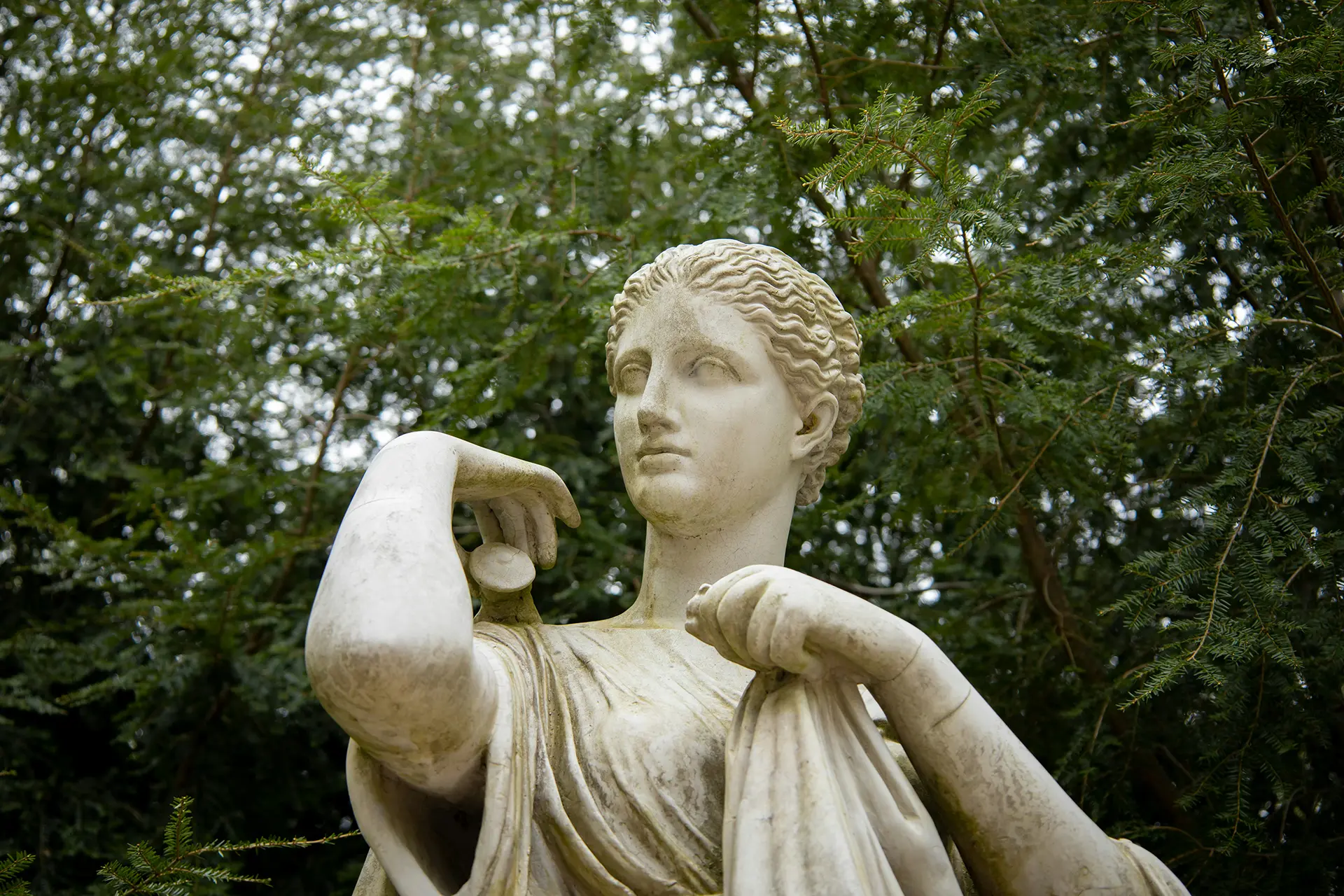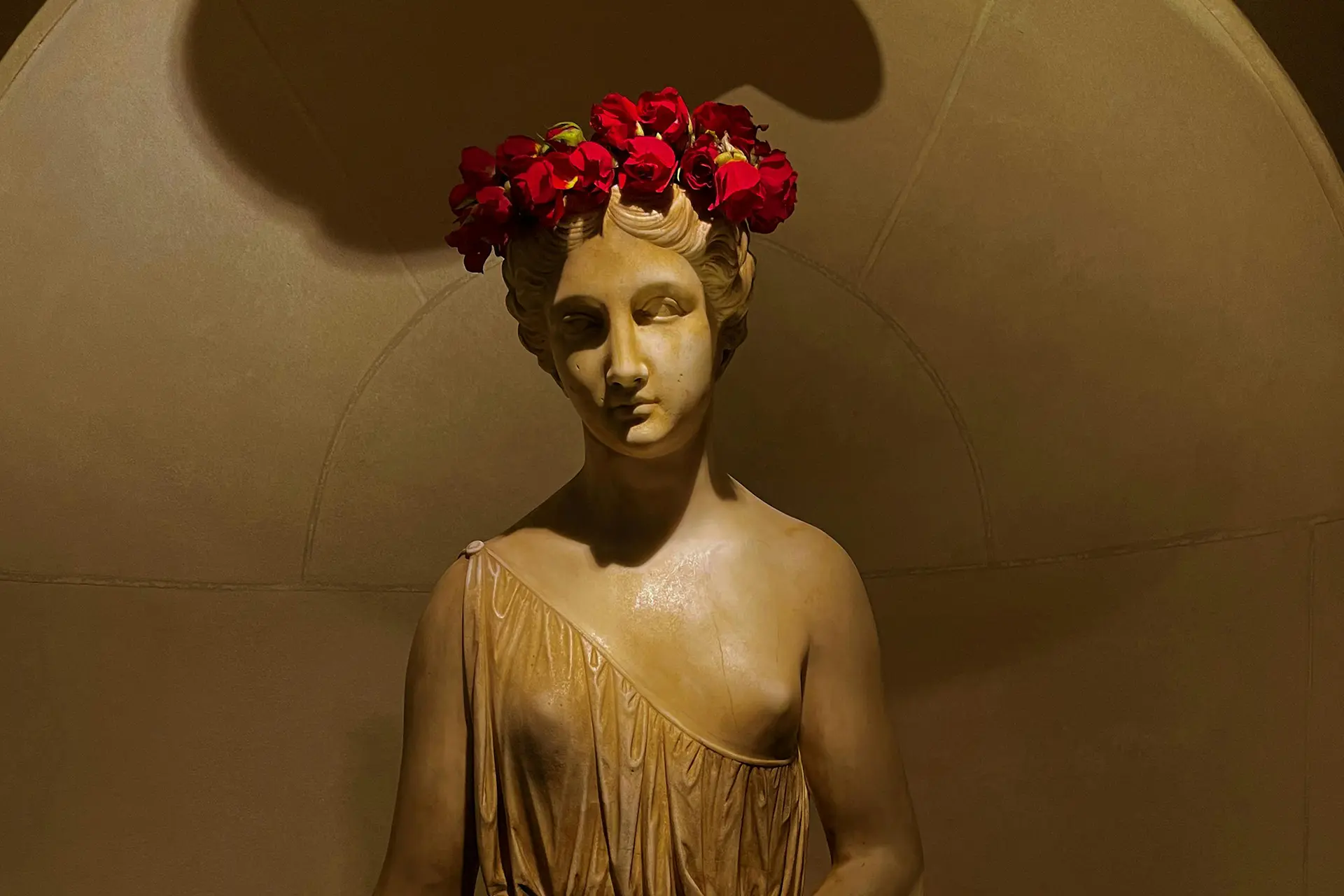
Discover Artemis, the Greek goddess of the wild and the moon, and her deep connection to the wilderness, wildlife, and night skies of Mount Olympus.
High on the untamed slopes of Mount Olympus, where forests stretch unbroken and the stars pierce the night sky with ancient brilliance, it’s easy to imagine the presence of Artemis—the huntress, the protector of wildlife, the goddess who walks the boundary between shadow and light. Among the Greek pantheon, Artemis remains one of the most evocative figures, forever tied to nature’s rawest and most sacred spaces.
Daughter of Zeus, Sister of Apollo
Born to Zeus and Leto, Artemis is the twin sister of Apollo. While her brother was associated with the sun, reason, and music, Artemis embodied the opposite: the moon, instinct, and wilderness. Her domain was not the polished marble temples of cities but the thick woods, wild animals, and remote mountain paths. She was the guardian of purity, independence, and the untouched natural world.
In many ways, the slopes and gorges of Mount Olympus are a fitting home for her mythology. This is a land where humans tread lightly, where deer move silently through pine forests, and owls glide through the dusk—where Artemis might still be watching from behind the veil of leaves.

Guardian of the Wilderness
Artemis was not only the goddess of the hunt, but also of wild animals and the ecosystems they inhabit. Her bow and arrows were symbols of precision and protection, not cruelty. She roamed the forests accompanied by a retinue of nymphs, sworn to preserve the sanctity of the wild.
Mount Olympus National Park—Greece’s first national park and a UNESCO Biosphere Reserve—captures this spirit. Its forests are home to boars, deer, lynx, and wolves; its skies host eagles and falcons. These creatures, once sacred to Artemis, still move through her dominion. In the silence of Olympus’ dense groves and alpine meadows, hikers today walk through a living sanctuary that feels divinely guarded.
Mistress of the Moon and the Night Sky
Beyond the hunt, Artemis was closely tied to the moon—a symbol of femininity, change, and mystery. In mythology, she guides the moon across the sky, watching the earth from afar in cool, silver light. The link between Artemis and lunar cycles reflects her connection to the natural rhythms of life—birth, growth, death, and renewal.
Mount Olympus offers some of the clearest night skies in Greece. On a cloudless night, constellations emerge vividly above its peaks, and the moon glows with a serene power. To gaze upward from a mountain refuge at midnight is to understand something of what Artemis represented: the beauty of solitude, the calm of nature, and the eternal pulse of the cosmos.

The Feminine Spirit of the Mountains
Artemis was also revered as a protector of women and children. She was a symbol of autonomy and strength, resisting the confines of marriage and power structures that defined other Olympian deities. For young women in ancient Greece, she represented an ideal—pure, fearless, and independent.
In the context of Mount Olympus, Artemis stands as a reminder that the mountain is not just for myths or mountaineers—it is also a space of refuge, healing, and quiet power. Whether walking through the Enipeas Gorge or standing before a mountain spring, her presence is felt in every untouched corner.
A Goddess Who Still Walks the Forest
Though centuries have passed since Artemis was actively worshiped, her legacy lives on in the way we protect natural spaces, revere wildlife, and find peace in the wilderness. Every conservation effort, every starlit hike, every moment of stillness under a full moon carries a whisper of her spirit.
Mount Olympus, with its rugged trails, secret waterfalls, and nocturnal beauty, remains her domain in spirit—a place where the wild is not tamed, and the ancient still walks alongside the modern.
For those who visit the mountain seeking more than just a view, Artemis offers a deeper experience: a return to nature, to instinct, and to the wild freedom that lives just beyond the edges of the known.



